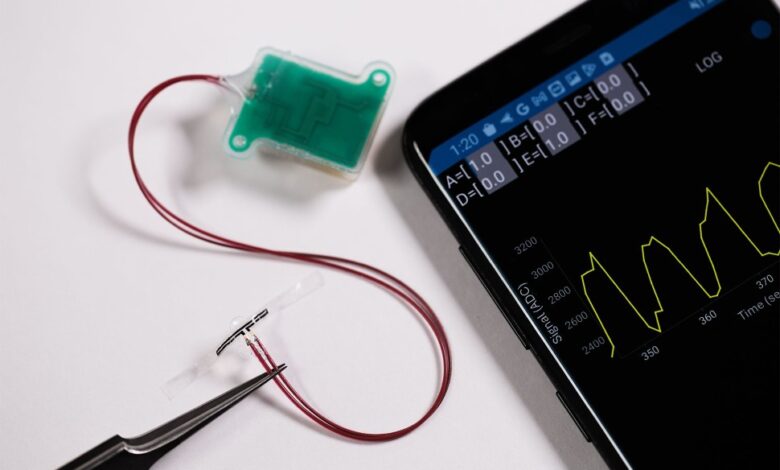Bladder sensor sends ‘pee-time’ alerts to patients’ on Android
A new implantable sensor has been developed, capable of sending alerts to an Android smartphone when the bladder is full.

For some individuals, sensing when it’s time to urinate isn’t as straightforward as it is for others. In a bid to assist those facing such challenges, a new implantable sensor has been developed, capable of sending alerts to an Android smartphone when the bladder is full.
The inability to detect bladder fullness can stem from various reasons, such as spinal cord injuries, spina bifida, or bladder diseases. While catheters are a common solution, they often come with discomfort and potential infection risks. Recognizing these drawbacks, a team of scientists from a well known global university embarked on creating an alternative solution.
Their innovation comes in the form of a soft, stretchable, thin strain-gauge sensor that is surgically attached to the exterior of the bladder. Multiple sensors are strategically placed on the organ, all connected to a single implanted “base station” housing a battery, Bluetooth module, and other electronics.
As urine fills the bladder and it expands, the sensors stretch in tandem without compromising their function. This stretching triggers each sensor to generate a strain signal, relayed to the base station. From there, the data is transmitted to an app on the patient’s Android smartphone, enabling them to monitor their bladder fullness. Additionally, physicians can access this information remotely.
In tests conducted on non-human primates, the technology delivered accurate readings over an eight-week period. The researchers are now exploring methods to stimulate the bladder for on-demand urination. Once patients receive a full-bladder alert, they can simply head to the nearest bathroom and urinate normally.
“This work is the first of its kind that is scaled for human use,” stated Prof. Guillermo A. Ameer, who spearheaded the study alongside professors John A. Rogers and Arun Sharma. “We demonstrated the potential long-term function of the technology. Depending on the use case, we can design the technology to reside permanently inside the body or to harmlessly dissolve after the patient has made a full recovery.”
Furthermore, the team is developing a biodegradable synthetic bladder patch infused with the patient’s own stem cells. After implantation into the dysfunctional bladder, adjacent bladder cells are expected to migrate into the patch, eventually transforming it into healthy new bladder tissue.









